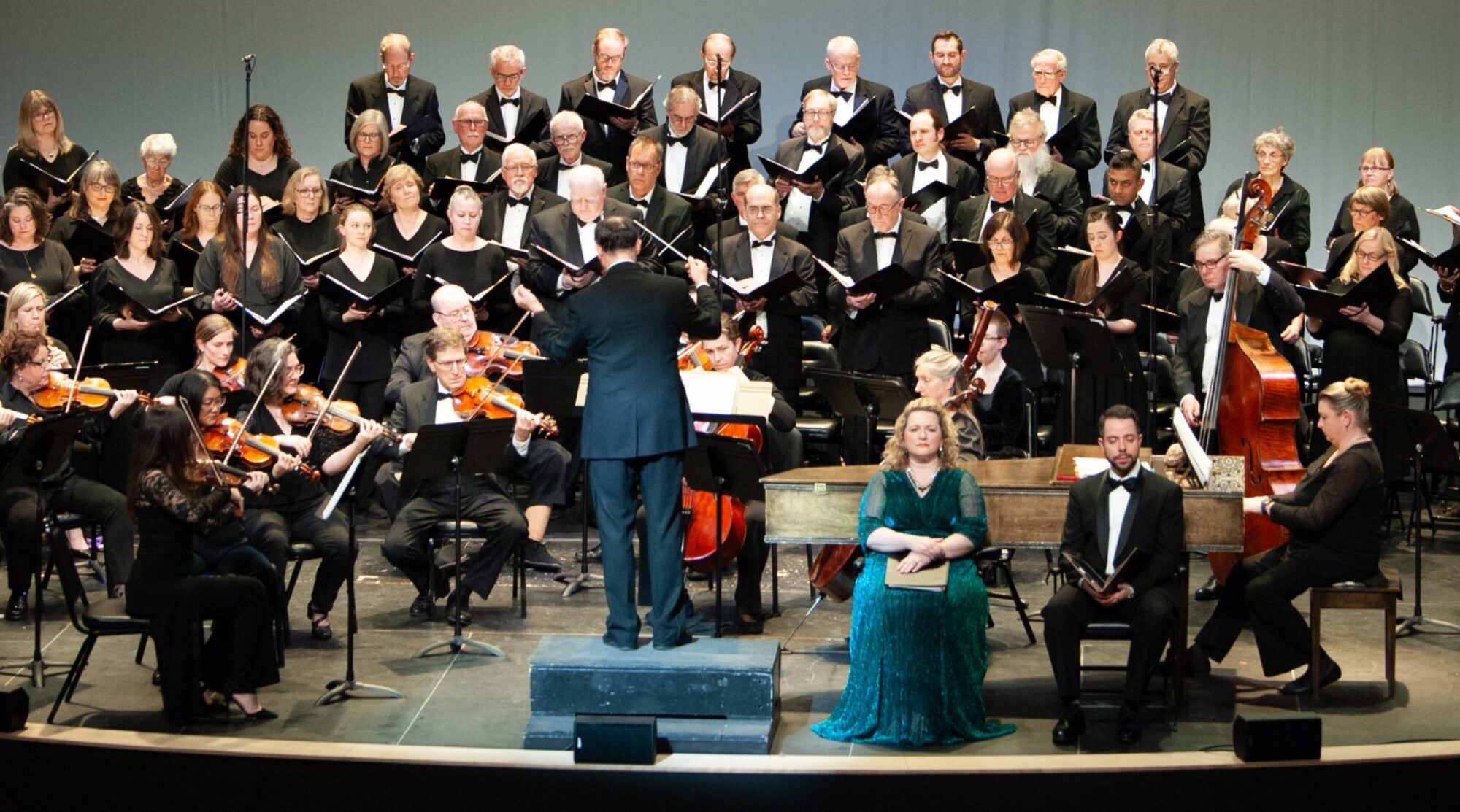Innovation Maintains Tradition: Bach Elgar Choir creates a live virtual singalong event for Handel’s Messiah
By Maija Saari (18 December 2020)
It seemed at the outset to be a very tall order.
In the middle of November, the Bach Elgar Choir set a goal to mount a performance of its popular Singalong Messiah a few weeks away. Many choirs and orchestras were hosting broadcasts of pre-recorded events for the season.
A live event – under such a tight deadline – was something else altogether.
On December 12, over 180 people logged in to hear a pared-down chamber choir of seven singers, accompanied by the exemplary pianist Krista Rhodes. Artistic Director Alexander Cann, framed on camera in front of a series of digital images from the choir’s archives and beyond, led the small group through a free live performance of highlights from George Frederic Handel’s Baroque-era seasonal oratorio.
Without the fulsome sound of large choir and orchestra, much depended upon the strengths of the six vocalists in the room. All were spread out in a local high school cafeteria, singing in a manner to ensure maximum protection from any potential spread of the virus. Cann was thrilled by the sound the small ensemble was able to create.
“What they did was really great and darn difficult to do. Just from a sheer exertion point of view it was impressive,” said Cann. “Handel is technically demanding as it is but this was performed under bizarre circumstances: distanced, masked, barriers, microphones.”
Local logistics surmounted, the next challenge was getting that great sound to a live audience of listeners at home.
Choir members and their leaders don’t typically require a lot of expertise in digital media broadcasting technologies. But the COVID-19 pandemic is pushing live performing arts organizations into entirely new worlds. Innovation, experimentation, trial and error are the new normal. So is the generous sharing of ideas and solutions between choirs.
Building on examples of various technologies used by the Oakville Choral Society, Chorus Niagara and others, the Bach Elgar Choir board and artistic leadership settled on a platform and format that could accommodate live virtual rehearsals, in late November.
A concert was the next step. Much of the learning was intensive and fast-paced. Cutting-edge advancements to virtual conferencing technologies were occurring at the same time. The Zoom software deployed, for example, had an update only days before the performance that helped optimize the sound for musical broadcast.
“It was essentially on Zoom’s recent assertions that it could support music that I felt confident enough to go ahead with it,” said Cann. “Trouble was none of us really knew what that meant or how to go about it, so there was a lot of testing and planning.”
Chorus member volunteers took on the challenge of leading the technical broadcast, with much troubleshooting and learning in the week prior to the event.
“Well, we got there, thanks to the persistence of Doug and Tim, and the many more who gave us feedback on our tests,” said Cann.
Board Chair Jane Savage was quick to praise the ground-breaking efforts of choir volunteers who took on the challenge.
“This was a true team effort, with many choir and board volunteers stepping up to help realize Alex’s vision,” said Savage.
Before the team knew it, it was showtime. At home, guests and most of the BEC members listened. Those who chose to sing along were welcome to do so in a rather unusual way – with home microphones muted. The technology is not quite there to enable sound to flow back and forth without a slight lag. However, the experience of a choir in your ears as you sing is pretty close to the real thing.
There were some hiccups and barriers, but when the performance ended, many of the guests and choristers took the moment to unmute themselves. The appreciation and connection was palpable.
“This felt, in many ways, like the live show it actually was,” said Cann. “We gave our audience the elation of engaging with something entirely precious. As a first attempt we at least proved it could be done and that live arts — by which I mean meaningful, purposeful, beautiful stuff — can still happen in COVID times.
“There have not been a lot of these experiences lately for any of us. There is a need out there – it felt great puncturing the COVID wall, even in a small way.”



